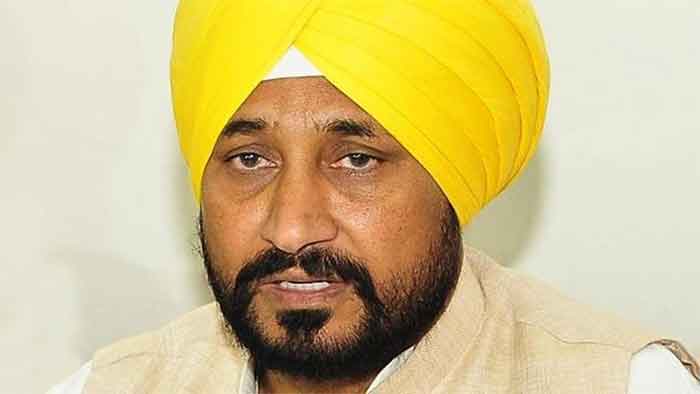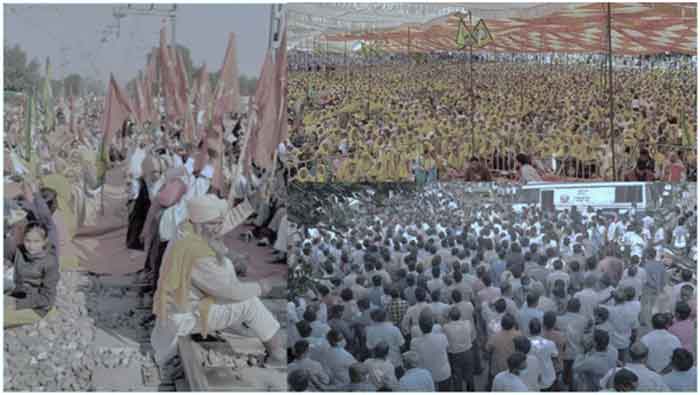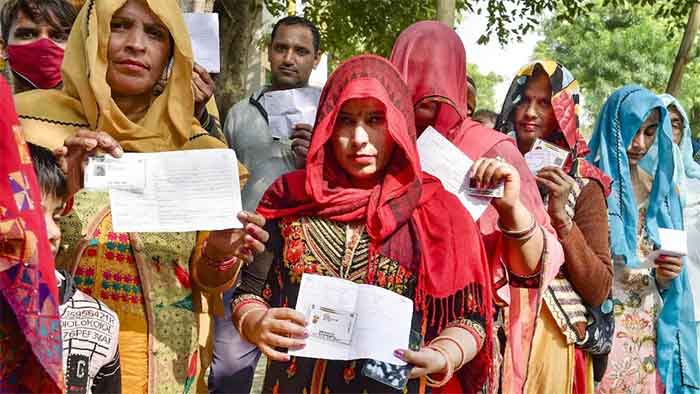
Selection of Charanjit Singh Channi as party’s Chief Minister-face in Punjab may have enhanced chances of Congress faring better in coming assembly elections than was presumed not too long ago. In 117-member Punjab Assembly, 59 seats are needed to form a majority. During the 2017 elections, Congress won 77 seats, two lesser than it secured in 2012. Aam Aadmi Party (AAP) won 12, eight lesser than in 2012. While Shiromani Akali Dal (SAD) managed only 13 in 2017 against 15 it won in 2012, Bharatiya Janata Party (BJP) secured five compared to three it won in 2012. Political gamble during coming polls is being viewed in general as a tight-rope walk for Congress. Political priorities of both AAP and BJP are apparently focused on ensuring defeat of Congress.
This electoral fight is three-cornered between Congress, SAD-Bahujan Samaj Party (BSP) alliance and AAP. Congress and AAP are contesting from all seats, with key battle assumed to be between these two. BJP is banking on its alliance with Punjab Lok Congress (PLC) and Shiromani Akali Dal (SAD Sanyukt). PLC is recently formed party of former Chief Minister Captain Amarinder Singh. BJP is contesting on 66 seats, PLC from 35 and SAD (Sanyukt) from 16.
By presenting Channi as party’s CM-face, Congress has probably upset rival parties’ calculations about their gaining on losses of Congress. This move has reversed speculations earlier held earlier about Congress performing dismally in Punjab. The same may not have been the scenario, if Navjot Singh Sidhu’s name had been announced. Undeniably, Congress leader Rahul Gandhi exercised shrewd political diplomacy in Punjab by not declaring Sidhu’s name as party’s CM face. This Sunday (6th Feb), Rahul arrived in Ludhiana in a car driven by former state unit chief- Sunil Jakhar with Chief Minister Channi and Sidhu seated at back symbolising his attempt to hold the party leaders together.
Politically, this must have been a tough ride. Nevertheless, the option of arriving with one or none of the three, with each reaching the destination separately was probably viewed as tougher. This may have led to either one feeling snubbed, let down or maybe even favoured. Rahul thus opted for their travelling in one vehicle, setting the stage for greater suspense about what was he heading for. “News” also circulated briefly about both being named as chief ministers- for half term each.
Setting aside various speculations, Rahul strongly asserted that his announcement was based on what had been decided by Punjabi voters. He made it clear that he supported people’s decision as Channi – having known poverty – would be best able to understand grievances of similarly afflicted Punjabis. Rahul exercised several political cards with this move. By opting for a Dalit CM, Congress leaders are probably hopeful that this would secure electoral support of this class in Punjab as well as in Uttar Pradesh.
Statistically, irrespective of the degree to which Punjabis’ opinion was actually taken, the manner of Rahul declaring it so, was democratically symbolic of his putting voters’ “choice” ahead of anyone else, including his own. At least, he tried creating this impression by asserting this strongly. Channi’s political significance for Congress is also marked by his contesting from two constituencies. Clearly, this sends the message that his selection as CM should not be viewed by others aspiring for the same position as a temporary arrangement. All attempts made by Sidhu to head the Punjab government, if Congress returns to power, have been pushed to the backburner. The former cricketer was left with little choice but express support for Rahul’s announcement. Undeniably, Sidhu’s opinion was respected with regard to Captain Singh’s resignation as Chief Minister. But at present Sidhu’s opinion about who should be the CM is certainly not viewed as the “ultimate” by Congress leaders and other party members. The Congress is definitely not oblivious of Sidhu being viewed as a political liability in certain sections. This includes noise made by Captain Singh about his ensuring defeat of Sidhu. Clearly, if Sidhu had been named as CM, Congress would have probably invited numerous political missiles against him and the party from several directions. Charges being already fired at him on several fronts, including a 30-year old road rage case, are just a minor indicator of this. The move may also also not have been welcomed by old party members, given that Sidhu joined Congress in 2017. Irrespective of whether Sidhu has been snubbed or not, Channi’s selection is equivalent to silencing storms which have may have risen from within and outside the party if former had been named.
With respect to other parties’ performance, if Punjab elections were not preceded by large-scale farmers’ protest, a better performance from BJP could have been seriously deliberated upon. In addition, BJP’s hold in rural areas of Punjab is not yet very notable. More than 60% of Punjab’s population is rural. It is as yet too early to assume that AAP has spread its hold through rural as well as urban parts of Punjab. In this context, with this being a tri-lateral contest, the possibility of BJP as well as AAP candidates playing the role of vote-cutters cannot be ignored. The same may be said about SAD and BSP. SAD’s former alliance with BJP is likely to hamper prospects of it making any major electoral gain. SAD parted its company with BJP in support of farmers’ protest against anti-farm laws towards last part of 2021. If assembly elections were not around the corner, SAD may have not backed away from this alliance. SAD’s alliance with BSP may not prove too beneficial for either. Having failed to win a single seat in 2012 and in 2017, chances of BSP moving electorally ahead seem remote. Nevertheless, rivals of Congress are hopeful of faring much better than they did earlier. Will they?
If Congress had gone overboard on Sidhu-front, political battle in Punjab would have certainly been tougher for it. However, with Channi as party’s CM-face, Congress is hopeful of electoral gains by gambling on this Dalit-card.
Nilofar Suhrawardy is a senior journalist and writer with specialization in communication studies and nuclear diplomacy. She has come out with several books. These include:– Modi’s Victory, A Lesson for the Congress…? (2019); Arab Spring, Not Just a Mirage! (2019), Image and Substance, Modi’s First Year in Office (2015) and Ayodhya Without the Communal Stamp, In the Name of Indian Secularism (2006).
















































